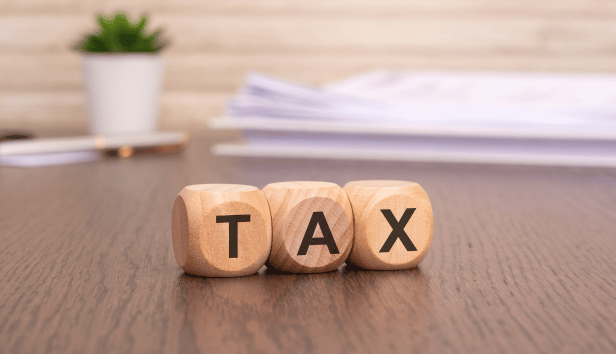
This article is for general guidance only and is not financial or professional advice. Any links are for your own information, and do not constitute any form of recommendation by Saga. You should not solely rely on this information to make any decisions, and consider seeking independent professional advice. All figures and information in this article are correct at the time of publishing, but laws, entitlements, tax treatments and allowances may change in the future.
You’ve probably heard the term “stealth tax”. It was first used in the 1990s and freezes in tax thresholds have meant it’s being used now more than ever. But what exactly does it mean?
This phrase typically refers to changes to the tax system that increase the level of tax people pay, without increasing headline tax rates. It is sometimes also used to refer to taxes that are not obvious to the person paying them, such as VAT.
“Put simply, stealth taxes are methods used to increase people’s tax bills without explicitly increasing the official tax rates,” explains Rachael Griffin, a tax and financial planning expert at Quilter.
On this page:

“Fiscal drag” means that income tax and inheritance tax are some of the biggest areas where people are paying more tax. And this means that the over-50s are among the most affected.
Christine Thornley, a partner in the lifestyle and estate-planning team at Irwin Mitchell Thornley says: “The over-50s are particularly affected by stealth taxes. Many in this age group are coming into inheritances. Additionally, those over 50 who are still working often earn more, making it difficult to avoid the impact of stealth taxes on their income.”
Fiscal drag has been an increasing feature of the UK tax system in recent years, and some people see this as a stealth tax. For example, while the basic and higher rates of income tax rate have not changed since 2007, there has been a huge rise in the number of people who have to pay income tax, as well as the average person’s tax bill.
“This fiscal drag effect has been particularly evident in recent years as income tax thresholds have not kept pace with inflation or wage growth,” says Griffin.
Since 2021, the amount of money someone can earn before they start to pay income tax – the personal allowance – has been frozen at £12,570 a year. This means that, as salaries and pensions rise, more people hit the threshold and are “dragged” into needing to pay income tax. Existing tax payers, meanwhile, face bigger tax bills as the proportion of their total income that is covered by the personal allowance shrinks.
The personal allowance is currently fixed at this level until April 2028. Figures published earlier this year showed that more than four million people – including almost two million pensioners – have already had to start paying income tax since the personal allowance was frozen in 2021.
In previous years, the personal allowance typically increased in line with inflation or average wage rises.
Fiscal drag also applies at the boundary between basic-rate (20%) and higher-rate (40%) income tax. Like the personal allowance, the threshold for higher-rate tax has been frozen, which means that more and more people have started to pay income tax at the higher rate in recent years.
“If the personal allowance had increased with inflation since 2021, it would now be worth £15,124, according to the Bank of England’s inflation calculator, rather than £12,570,” says Griffin. She points out that, for someone earning the current average wage of £36,000, this means they will pay roughly £4,700 in income tax this year. Had the threshold kept pace with inflation, their tax bill would have been just £4,200.
Tom Minnikin, partner at tax consultancy Forbes Dawson, highlights research published recently by the London School of Economics. “This shows that an individual’s average tax rate – the total amount of income tax they pay divided by their pre-tax income – is on course to rise from 11.6% in 2021 to 13.6% in 2028, purely as a result of fiscal drag.”
Meanwhile, the full state pension in 2025-26 will be £11,973 a year – just £597 shy of the personal allowance. Griffin adds: “It is looking increasingly likely that we could soon be in the perverse situation where the State Pension surpasses the personal allowance, and pensioners might have to start paying back some of their State Pension to HMRC because of the frozen threshold.”

Fiscal drag is not limited to the income tax system, says Thornley. “For example, the thresholds for inheritance tax are frozen until April 2030, which means that as property and asset values rise, more estates will be subject to this tax,” she explains.
The inheritance tax nil-rate band – the amount that can be passed on free of tax to beneficiaries – has been fixed at £325,000 since 2009. Griffin says that, if this threshold had risen in line with inflation over the past 15 years, it would be now just over £500,000.
Minnikin adds that he and his colleagues are seeing increasing numbers of people paying tax on their dividends. “The annual tax-free allowance on dividends from company shares was £2,000 until the 2022-23 financial year, but it has now come down to just £500,” he points out.
Capital gains tax allowances have also been cut. The Annual Exempt Amount was fixed at £12,300 from 2020/21 to 2022/23. It was then cut to £6,000 in April 2023 and then to £3,000 in April 2024. Rates of capital gains tax also increased in the October 2024 Budget, although this wouldn’t usually be called stealth taxation.
VAT has been around since 1973, when it was introduced on many goods and services. The standard rate is now 20%. It is sometimes described as a stealth tax, since it isn’t always obvious to the person paying it.
Some people also consider employer National Insurance contributions – which rose in this October’s budget – are a form of stealth tax because the costs are likely to be passed on by businesses, either to customers in terms of pricing, or to employees (for example through lower wages).
There are a number of ways in which you can mitigate the impact of stealth taxes. Griffin says: “Those nearing retirement, or who are semi-retired and still working, should look to maximise their pension contributions where possible.
“Pension contributions can sometimes help you avoid tipping over into a higher income tax bracket. They are especially beneficial for higher-rate taxpayers, as you can currently receive up to 40% tax relief on your contribution, but will often only pay the basic rate of 20% when you withdraw the money in the future.”
Minnikin adds: “If your pension allows flexible withdrawals, you may be able to limit the amount of income you take for the time being, provided you are happy to wait for the income tax allowances to go up.”
In her Budget speech in October, Chancellor Rachel Reeves said she would not extend the freeze on income tax thresholds past 2028. If you are paying income tax on savings income, you could consider using an individual savings account (ISA), where interest is not subject to tax.
There are a number of things you can do to reduce the impact of inheritance tax. Thornley says: “For inheritance tax, it’s crucial, where it’s affordable, to fully utilise lifetime exemptions and make other gifts which can be tax-free if you live for seven years. The ‘normal expenditure out of income’ exemption can be very generous if used effectively.”
This rule means that, in certain cases, individuals can make gifts to family members out of their regular income, and these gifts should be immediately exempt from inheritance tax. However, it is worth seeking professional advice if this is something you’re considering.
Thornley adds: “Recent Budget changes have impacted pensions, business and agricultural property, so financial planners can help with cash flow forecasting and provide advice on responding to these changes.
Given that stealth taxation through inheritance tax will continue for another five and a half years, it’s worth getting proper advice on how to arrange assets and income, and what could be gifted away to save tax.”






From sales to cashback, here’s how to get more for your money online.
.jpg?la=en&h=354&w=616&hash=1254A3F816E81965A47EA68E3AEC9F7A)

Smart meter pros and cons explained, and how to use them. Plus, new rules mean you could get a payout if yours doesn’t work.
